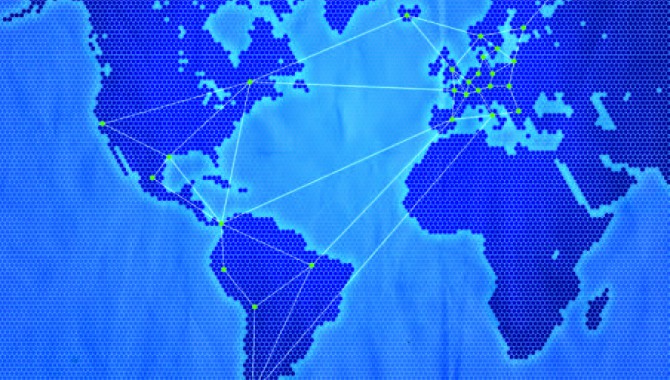
By Conrado Morlan
Having the opportunity to work for a company that operates in more than two hundred countries and territories and is a global leader in logistics has given me the opportunity to lead large global and regional information-technology projects. While technology made the work complex, the element of culture, both national and organizational, amplified the complexity.
A Global Project
The objectives of my first assignment were to lead the convergence of existing invoicing applications hosted and managed by country IT teams to a centrally managed single platform hosted in one of the regional data centers, and to standardize operations and processes. The new invoicing platform would be used by all countries in the Americas region; changes would follow a formal change-request process.
Although the existing invoicing applications shared core functionality, IT departments in individual companies had customized them by adding nonstandard functions that often did not comply with regional guidelines. This uncontrolled behavior led to new functions and processes that disrupted the standard operations at country and regional levels.
The technical team supporting the countries was challenged by reported incidents that often related to the customized functions, not core functionality. This was a source of conflict between the country IT teams and the technical support team, which many times was unable to address the issue. Business users did not produce invoices on time and their level of satisfaction was low. All this affected country and regional cash flow.
The Americas management board sponsored the project and mandated that all countries stop using any feature or function not aligned with the regional invoicing standards.
The Project Team
The project team consisted of stakeholders, the deployment team, and a technical support team. Stakeholders were the permanent regional management board and rotating country officials, including general manager, finance officer, and IT officer, who joined when the new platform was deployed in their particular country. The core deployment team was the same from project inception through completion and consisted of a project manager, technical-support team lead, and subject-matter experts in technology and invoicing. The rotating team members included country resources, both technical and end users. The technical support team, remotely located in Asia, supported day-to-day operation during the Americas business hours.
During team formation, team management became complex as some stakeholders and members of the deployment team changed when a new deployment started. New members came on board and others departed as the deployment in their countries was completed. I had to understand how to integrate new members into the team smoothly, convincing them to accept change and promptly collaborate with the project.
I learned that I needed to develop cultural competencies to manage the project team effectively and establish connections with team members when they came on board. A kick-off meeting to explain the purpose and benefits of the project helped establish the bond between new team members and the project. The most important part of connecting was stressing the importance of their roles and how their local experience would enrich the project, as this created a sense of belonging that translated into engagement. But the connection was strengthened by understanding and respecting the different communication styles and preferences of the national cultures involved.
There are many books about national cultures, but few resources explain how to deal with national cultures in project teams. While attending project management congresses, I was able to connect with other project management professionals who had faced similar challenges and learn from their experiences. I also learned from my own mistakes. During my first visit to Asia, I met with the technical-support team lead and his team and inadvertently broke the local meeting protocol when I started asking direct questions of team members. After catching the nonverbal cues of team members that showed they were asking the team lead for permission to answer, I switched to directing questions to the lead. He then selected the person to answer the question. At the end of the meeting, I apologized to the team lead and team members for my oversight and made it clear that my intention was not to make them uncomfortable or violate local meeting standards. I quickly shared what I learned with the rest of the deployment team.
Speaking foreign languages is a must in a global project environment, but language skill alone does not make a cross-cultural expert. It is necessary to understand other cultures’ values, beliefs, and communication preferences. Knowing how they manage and resolve conflict is essential, for obvious reasons.
During my first visit to Asia, I met with the technical-support team lead and his team and inadvertently broke the local meeting protocol when I started asking direct questions of team members.
It is also important to understand your own cultures norms and behaviors. That knowledge helps guard against interpreting other cultures’ behaviors in terms of your own unexamined expectations. Reflecting on your own culture helps you understand and interpret why people from other cultures act the way they do.
With those recommendations in mind, I looked for ways to improve my cultural awareness in order to better understand my team members. As the project progressed and my cultural awareness improved, my connection with international team members became closer and more robust. When I had to spend more than two weeks in a country, I usually spent my weekends visiting popular spots where locals met: restaurants, farmers’ markets, coffee shops, and occasional sporting events where I observed people’s customs, traditions, and behaviors. My observations in those settings helped answer my questions about culture. When in doubt, I asked questions either of the locals or my colleagues.
Intracompany Networking
I often met with country management boards during the course of the project; these meetings offered good opportunities to establish long-lasting business relationships. I learned the importance of doing “my homework,” gathering all the relevant information prior to any meeting and knowing the audience in advance. Having established strong relationships in the initial phase of the project helped me get insight into country officials from people who had already dealt with them. Knowing the preferences and sometimes the opinions of a country’s management board about the project helped me to build the right deployment strategy and know what to expect from meetings.
In every meeting with country management boards, my team and I wore business attire and arrived on time. Board members arrived gradually and the general manager usually arrived late, demonstrating his status. The meeting started with preliminary discussions that helped build rapport. Deployment discussions occurred only after rapport was established. Usually, the first meeting exceeded the original allotted time and a second meeting was required to make the final decisions.
In this kind of project, it is important to have a well-defined circle of people who can influence the outcome. It can be like having “invisible” team members who support important functions and contribute to project performance.
Relationships should span all levels of the organization and not be limited to the higher ranks. Establishing a good relationship with users gives you feedback regarding the operation of the application and how it can be enhanced. For instance, Costa Rican users helped solve a common problem: end-of-day activities that involved several steps that required constant attention and, often, work after regular business hours. They suggested assessing the feasibility of automating these tasks. The assessment was positive and the tasks were automated, enabling Costa Rica and the other countries to avoid overtime payment.
A New Project Manager’s Role
In an environment where organizations depend on global projects for benefits that contribute to strategic objectives, the project management professional needs to explore new ways to lead, execute, and deliver projects supported by dispersed and diverse teams. Technical expertise is not enough. Project managers must adopt a business-oriented approach and cultural awareness and other soft skills. The most important knowledge and skills include the following:
- Strategic Management. Understanding an organization’s strategy will provide the backdrop for future assignments and an understanding of project selection criteria. Only projects that help the organization fulfill its intended purpose should be selected.
- Mindful Communication. Communication is crucial to project success. Communication needs to be customized to the specific cultures involved in a diverse project team. Good communication influences and inspires project teams and helps build strong relationships across the organization.
- Adaptability. New leadership styles that fit the global project are required when working with diverse and dispersed teams located across time zones.
- Resilience. Realigning or repairing projects facing unexpected hardship because of miscommunication and problematic behaviors as well as cross-cultural issues and conflicts will be a regular part of the project managers task.
- Transparency. Adherence to an organization’s values and culture as well as professional codes of ethics is mandatory in global projects. The state of the global project needs to be shared promptly with relevant parties whether the project is in good shape or facing hardships.
In this new role, the project manager will turn into a perennial learner striving toward excellence, a great communicator, and a business partner who ensures that projects will produce the benefits the organization is seeking.
Key Questions
- As a global project manager, how do you deal with cultural issues in your project team?
- What is your strategy to deal with conflict in a cross-cultural team?
- Do you enjoy the challenge of being a global project manager?
About the Author
 |
Conrado Morlan has more than twenty years of experience as a project and program management practitioner, leading complex projects in North America, Latin America, and Europe and managing complex negotiations and influencing organizations across functions and levels. He routinely shares his knowledge and experiences through events sponsored by PMI and PMI Chapters in the United States and Latin America. He can be reached by e-mail or on Twitter, @thesmartpms. |








